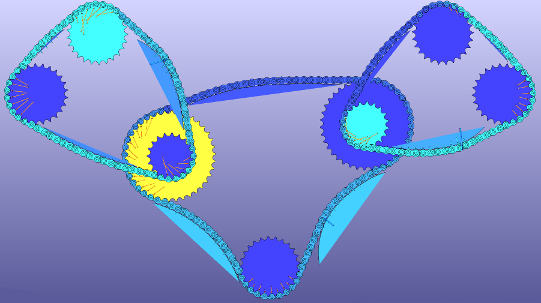Combustion engines are required to reduce noise and exhaust emission while simultaneously keeping or increasing their performance. To achieve these goals, optimizing the components and assemblies is a key task.
Besides the computation of the dynamic quantities within the system, the simulation of friction requires suitable models under changing physical boundary conditions, such as the temperature, the viscosity of the operating material and the external excitation. Also, the numerical treatment of the discontinuous dynamics due to the high-frequent oscillations is challenging.
Concerning the acoustic simulation, it is not suitable to simulate the entire transfer path from the engine to the passenger. Instead, interfaces like bearing zones must be identified, serving as backup mechanical quantities and allowing for similar evaluation.
The optimization process of the system comprises friction and acoustics. Due to the large number of parameters and the complexity of the system, methods of reducing computing time play an important role. Possible approaches are suitable evolutionary algorithms, using neural networks and arallelizing computing processes.

